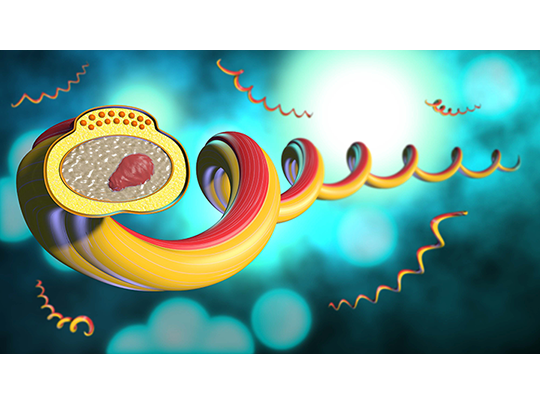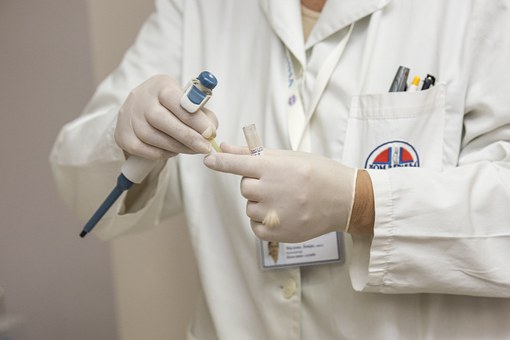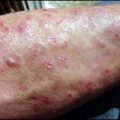What is syphilis?
Syphilis is an infection that develops due to T. pallidum bacteria. These bacteria can spread between people through direct contact with a syphilitic sore. These sores may develop on the skin or mucous membranes of the vagina, anus, rectum, lips, or mouth. Syphilis is most likely to spread during oral, anal, or vaginal sexual activity. People rarely pass the Syphilis bacteria on through kissing. The first sign is a painless sore on either the genitals, rectum, mouth, or another part of the skin. Some people do not notice the sore, as it does not cause pain.
These sores resolve on their own. However, if a person does not receive treatment, the bacteria remain in the body. They can remain dormant in the body for decades before reactivating and damaging organs, including the brain. Syphilis can be passed on through sex without a condom, sharing needles and injecting equipment, and from mother to child during pregnancy. Syphilis is not passed on through sharing food, hugging, or using the same toilet as a person with syphilis.
Sex and syphilis
Syphilis is most commonly passed on through vaginal, anal, or oral sex without a condom or dental dam, with someone who has syphilis. A person can pass on syphilis even if they don’t have any symptoms. Syphilis causes infectious sores or rashes. Contact with these sores and rashes is the main way that syphilis is passed on. This means the infection can be passed on through genital contact or sex, even if you don’t ejaculate (or cum).
How do I prevent syphilis from being passed on through sex?
Using condoms and dental dams correctly and consistently for sex is the best way to prevent syphilis from being passed on. Make sure that you use a new condom each time and remember that the condom or dental dam must cover sores or rashes or you won’t be protected.
Syphilis can also be passed on by sharing sex toys. To reduce your risk of syphilis, avoid sharing your sex toys or make sure that they are washed and covered with a new condom between each use.
Testing regularly for syphilis and other STIs is important, especially if you have multiple sexual partners. Talking to your partners about your sexual health and knowing each others’ statuses helps you protect both of your sexual health.
PrEP doesn’t prevent you from getting syphilis, and neither does the contraceptive pill or other forms of contraception (apart from condoms).
Sharing needles and blood transfusions
Syphilis can be passed on by sharing needles and injecting equipment. To reduce your risk, avoid sharing needles or injecting equipment. Read more information on getting new needles and injecting safely. It’s possible for syphilis to be passed on through blood transfusions, but this is very rare as most places test blood for infections including syphilis before transfusions. If you’re worried about a blood transfusion, speak to your healthcare provider.
Syphilis and pregnancy
Syphilis can be passed from mother to child during pregnancy (this is called congenital syphilis). To avoid passing syphilis on, it’s important that women test for syphilis during pregnancy. Pregnant mothers are advised to test at their first antenatal appointment, as well as after any time that they think they were at risk of getting syphilis. If you test positive for syphilis, your healthcare worker will offer you antibiotics to cure the infection for you and your baby. It’s important that you take the treatment because without it syphilis can be very dangerous for your baby, and increase your risk of miscarriage and stillbirth. Speak to your doctor or healthcare worker for more information and advice.
What are the symptoms of syphilis?
Many people with syphilis won’t notice any symptoms for years, so, if you think there’s a chance you could have syphilis, don’t wait for symptoms to develop, just go for a test. Without treatment, a syphilis infection develops through different stages and can become more serious, spreading to other parts of the body.
Early symptoms
The first thing a person may notice is a painless sore (called a chancre) – usually around their anus or genitals. A person would usually get this around 2-3 weeks after infection, but not everyone experiences this symptom. Chancres normally heal by themselves, but without treatment, the infection will progress and more symptoms and health problems will develop.
Later symptoms
A few weeks after the early symptoms have passed, you might start to feel ill, with a fever or headache, and notice weight loss or skin growths around your anus or genitals. Some people get rashes on their bodies, often on the palms of their hands or soles of their feet.
Latent stage
After this, a person may live with syphilis for years without any signs of infection. This is known as the ‘latent stage’ of infection. However, if syphilis is still left undiagnosed and untreated, the infection will go on to cause serious health problems.
Problems if left untreated (late-stage syphilis)
If left untreated, syphilis will eventually cause serious health problems. It can cause irreversible damage to your heart, brain, and nervous system and lead to loss of sight, hearing, and other problems. Getting tested and treated early means that you can prevent this from happening, allowing you a full recovery.
How do you test for syphilis?
Testing regularly for STIs, including syphilis is one of the best ways to look after your health. To test for syphilis a healthcare professional will do a blood test. The test doesn’t hurt and will only take a small amount of blood. A healthcare professional may also examine your genital area, mouth, and throat, to check for rashes or growths. If you have sores, a swab will be taken from these. You shouldn’t feel embarrassed going for these tests, they’re a normal part of looking after your health and the healthcare worker will do them all the time.
If you test positive for syphilis, it’s important that you let any current or recent sexual partners know, as they will need to test too. Your healthcare worker can give you advice on how to tell them or may offer to tell them anonymously for you. You should also test for other STIs.
How is syphilis treated?
Syphilis can be cured with antibiotics. However, it’s important that you get tested and treated early on, as some health problems caused by late-stage syphilis can’t be resolved. The specific antibiotics used to treat syphilis may vary depending on where you are. Ask your healthcare professional any questions you have about your treatment.
Your healthcare worker will be able to tell you when your infection has cleared. They may advise you to avoid having sex until you have finished your treatment, the sores have healed and they say it’s ok.
Remember, having been treated for syphilis previously does not make you immune. You can still get syphilis again.
Syphilis and HIV
If you have been diagnosed with syphilis you should also test for HIV. Having an STI, including syphilis, can increase your risk of getting HIV. This is because having an STI, especially one that causes sores, makes it easier for HIV to get into your body and cause an infection.
People living with HIV can also be more likely to get syphilis. This is especially the case for people who aren’t on treatment or who have a lower CD4 count. You’re more vulnerable to infections, like syphilis, if your immune system is weaker. Syphilis may also progress more quickly in people living with HIV, so if you’re living with HIV and think there’s a chance you might have syphilis it’s important to get tested and treated early on.
Speak to your healthcare provider if you are living with HIV and taking treatment for syphilis, to make sure that the syphilis medication won’t affect your antiretroviral treatment (ART).
What Syphilis Rash and Sores Look like
These sores are usually (but not always) firm, round, and painless. Symptoms of secondary syphilis include skin rash, swollen lymph nodes, and fever. The signs and symptoms of primary and secondary syphilis can be mild, and they might not be noticed. During the latent stage, there are no signs or symptoms.





